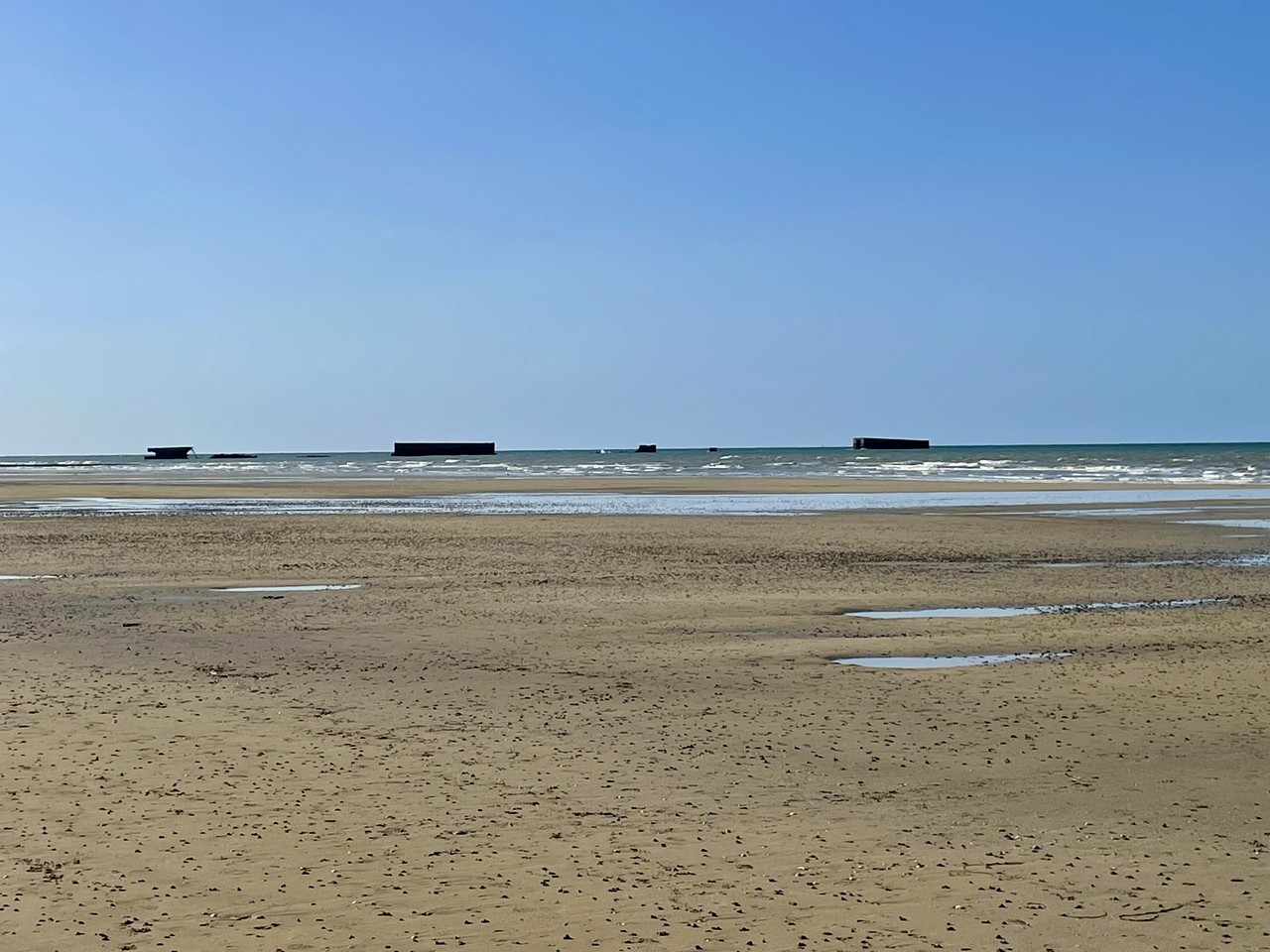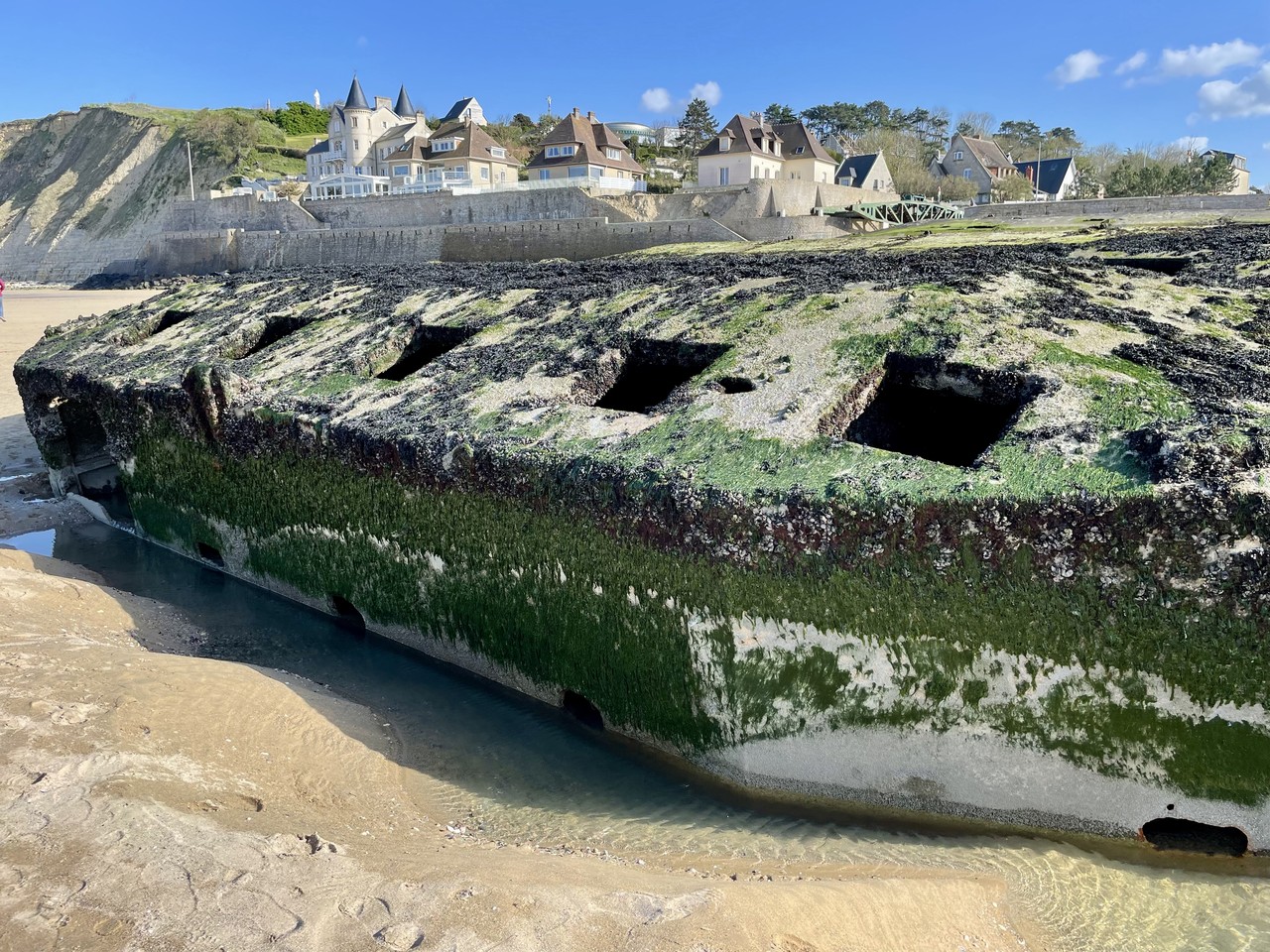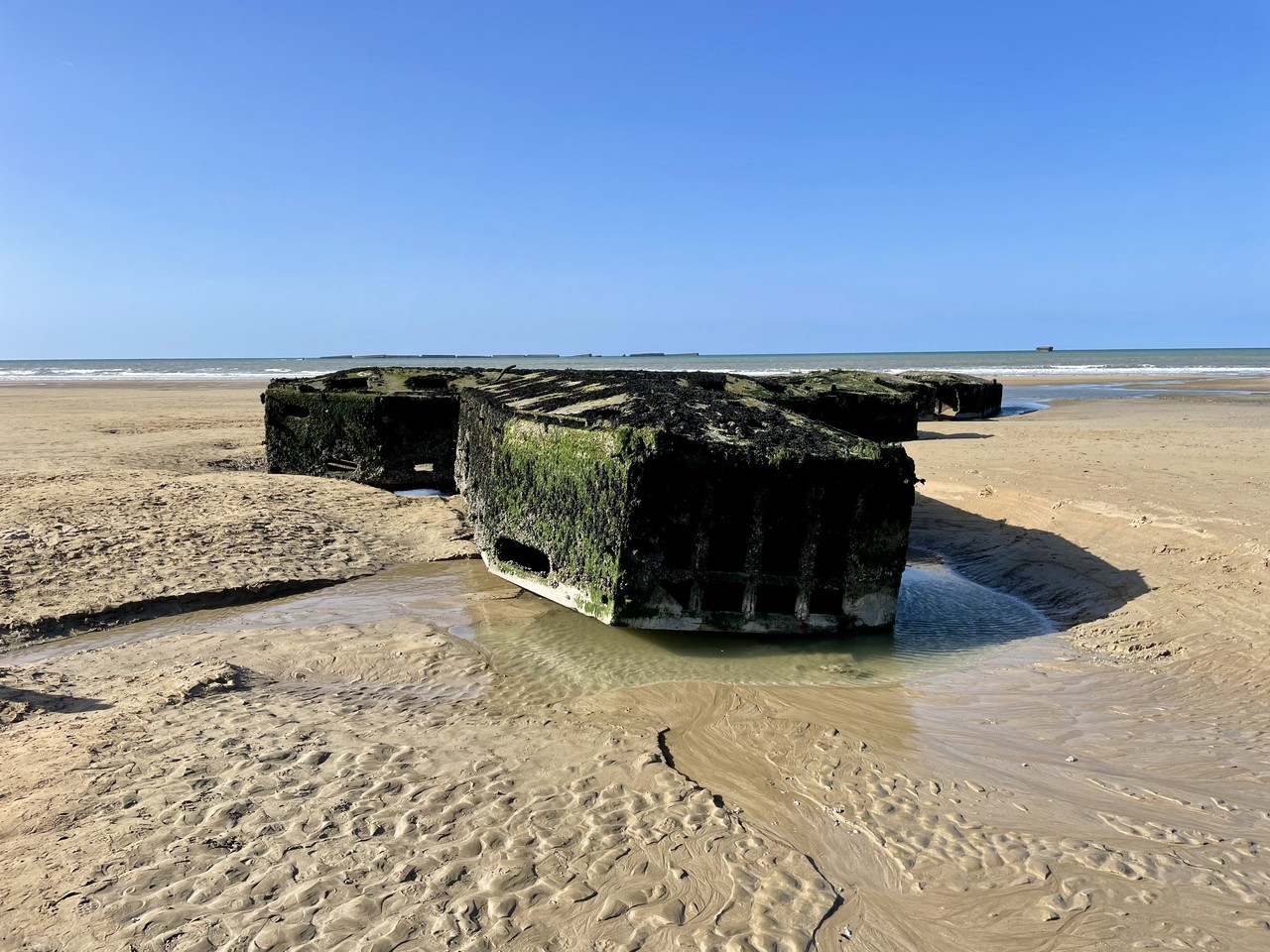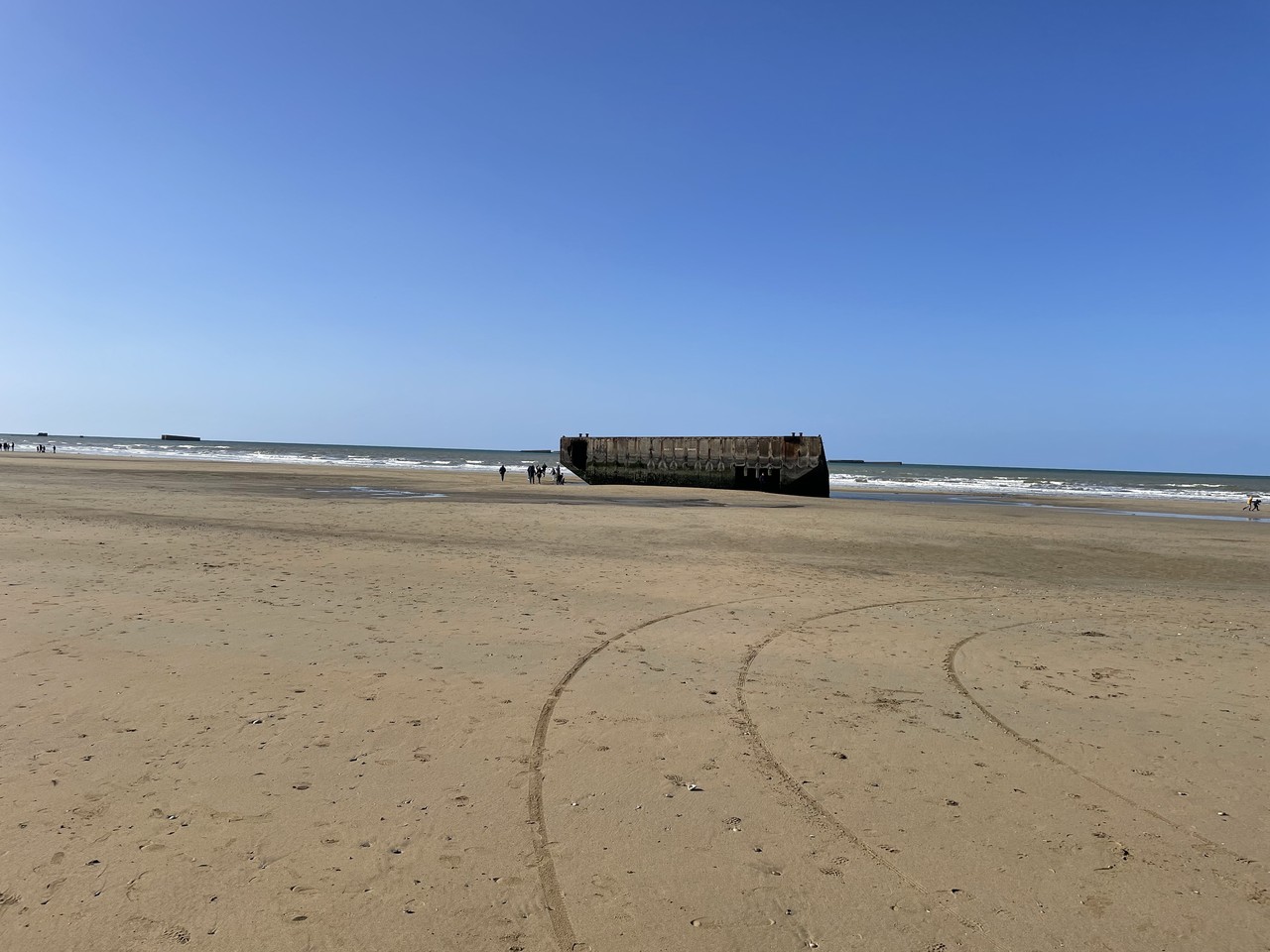Mulberry Harbour 'Kite' Anchor
Francja
Oznacz
Plan
Udostępnij
Trasa
For the Allied artificial harbours (known as ‘Mulberry’) to work, sections had to be anchored down and secured into position. This ensured that components were not washed away with tides and strong winds. A dedicated anchor therefore needed to be designed and manufactured, known as ‘Kite’ anchors.
The ‘Kite’ anchor was specifically constructed during the Second World War to be used as an essential part of the artificial Mulberry harbours that were constructed.
In total, 2,434 ‘Kite’ anchors were manufactured during the war period and only two are known to still exist. Here at Arromanches-les-Bains, one replica is part of the memorial.
The ‘Kite’ anchor was fitted onto the ‘whale’ floating road way components and then towed across the Channel. Each section that a ‘Kite’ anchor was attached to needed to be secured to the seabed. Traditional anchors were insufficient and ineffective in doing this, making the ‘Kite’ anchor historically significant.
The ‘Kite’ anchor was designed by Major Allan Beckett of the Royal Engineers. The manufacturing was undertaken by Braithwaites & Co in the UK. The final design was found to be able to resist up to 30 tonnes pull of force. The anchor got its name due to the design that it was based upon, a flying kite. There was only one difference between the two: a flying kite pulled up with force whilst the ‘Kite’ anchor pulled down. This became a crucial part of the whole Mulberry.
Once the ‘Beetle’ and ‘Whale’ sections were in place off the coast of Normandy in their designated locations, the ‘Kite’ anchors were deployed.
Adres
Cale Marechal Montgomery, Arromanches-les-Bains









